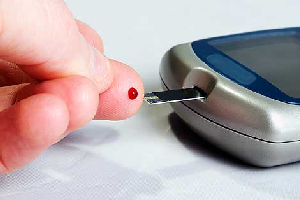by: Dr. Craig A. Maxwell
Diabetes is a metabolic disorder characterized by the body’s inability to properly regulate insulin. The pancreas may not produce enough insulin or the cells may respond inappropriately to the insulin. Believe it or not, there are five types of diabetes. On this page, we’ll look at them in brief detail before focusing on how to control type II diabetes through natural means!
Types of Diabetes
- Type I Diabetes
Type I diabetes, also called insulin-dependent diabetes, can occur at any age but usually appears in infants and young children. Type I diabetes occurs when the body makes little to no insulin because the immune system is attacking the insulin-producing cells in the pancreas. This type of diabetes has nothing to do with diet or lifestyle. It is an autoimmune disease that must be controlled with an insulin pump or injections for life.
- Type II Diabetes
Also called adult onset diabetes, type II diabetes occurs when the body still produces insulin but does not produce enough of it or the body responds inappropriately to it. Type II diabetes usually occurs after the age of 40 and is closely connected to diet and lifestyle.
- Type III Diabetes
Type III diabetes is considered a hybrid form of diabetes, which means a person needs to have either type one or type II diabetes in order to have type III. According to a study done at the Rhode Island Hospital and Brown Medical School, insulin is not only produced by the pancreas but by also by the brain. If the brain does not produce enough insulin, cells begin to die, and this could lead to the development of Alzheimer’s disease. It is believed the common cause of type III diabetes is electromagnetic pollution from cell phones and computers.
- Latent Autoimmune Diabetes in Adults (LADA)
This type of diabetes is closely related to type I diabetes and is autoimmune in nature. However, this type of diabetes is difficult to diagnose because it is not insulin-dependant like type 2. This type of diabetes is often called type 1.5.
- Gestational Diabetes
 Up to 2 to 10 percent of women develop high blood sugar during their pregnancy. This type of diabetes usually resolves itself after the child is born but can leave a woman at risk for developing type II diabetes later in life.
Up to 2 to 10 percent of women develop high blood sugar during their pregnancy. This type of diabetes usually resolves itself after the child is born but can leave a woman at risk for developing type II diabetes later in life.
Symptoms of Diabetes
- Excessive Thirst
- Frequent Urination (May also be linked to BPH)
- Excessive Hunger
- Sudden Weight Loss (Type I)
- Extreme Fatigue
- Tingling in Extremities
- Blurry Vision
- Dry, Itchy Skin
- Slow-Healing Cuts and Wounds
- Nausea
- Frequent Yeast Infections








